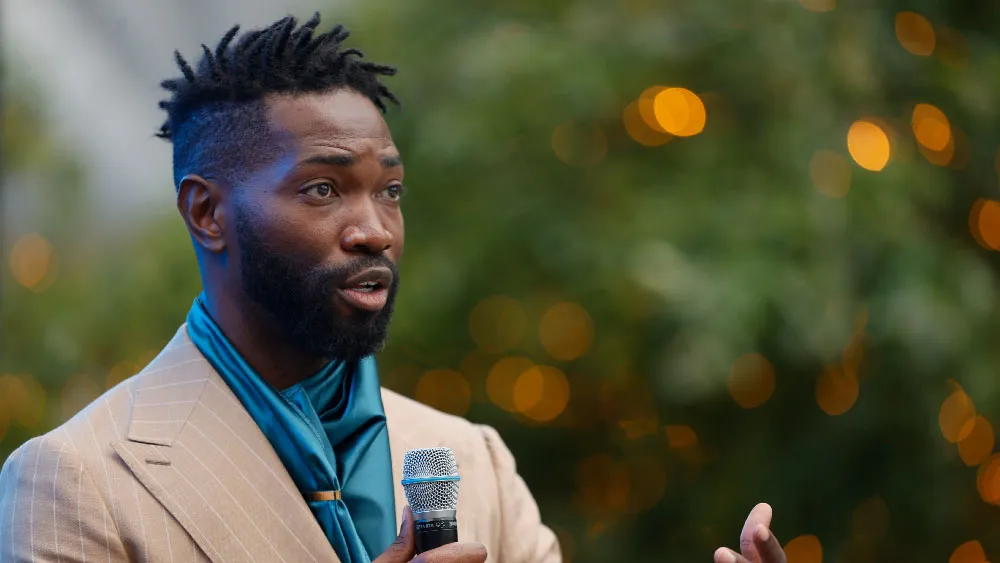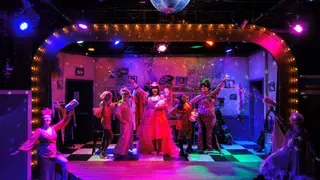January 6, 2014
Working
Kilian Melloy READ TIME: 6 MIN.
Studs Terkel's seminal work of oral history "Working: People Talk About What They Do All Day and How They Feel About What They Do," published in 1974, offered a glimpse into the thoughts and feelings of the American worker, from the street level (teachers, firemen, street walkers) to the literal and social heights of business executives with corner offices in skyscrapers (and the builders who constructed those towering buildings).
The book was first adapted for the stage as a musical in 1977 by Steven Schwartz and Nina Faso, with Schwartz also writing a number of songs for the show (along with James Taylor, Craig Carnelia, and several others). Since then, it's been revised a few times, most recently in 2012 by Schwartz himself, who has updated the play -- now the characters talk about emails and cell phones -- and added and dropped some scenes. (In one sign of the times a fast-talking, jittery fellow relates how he lost his job and fantasized about shooting up his office. No, this is not your father's "Working.")
This new version of "Working" appears at the Lyric Stage Company, starring a six-actor ensemble that includes Tiffany Chen, Christopher Chew, Shannon Lee Jones, Cheeyang Ng, Merle Perkins, and Phil Tayler, where it's running through Feb. 1. This version includes the two newer songs by Lin-Manuel Miranda that were added in 1999. The play's structure is a little different, with some snappy transitions and striking parallels -- an ironworker (Chew speaks plaintively about how he's viewed as "just" a worker, while high-powered financial operatives make their career homes in the spaces he built; as his monologue ends, Chew slips out of his overalls, revealing an office-ready suit (complete with pink shirt and vest), becoming that very executive. In another passage, a "socialite" and charity fundraiser (Jones) shares the spotlight with an escort (Perkins), their monologues serving as fun-house mirrors of one another.
In another clever episode, two people who work in "communications" (a call center worker and a receptionist) talk over one another, their speeches almost randomly aligning with identical phrases spoken at the same moment. Still later, a caregiver for an elderly man and a day care worker supervising young children speak about their work in a way that might make you smile -- but might just as easily give you the willies about the prospect of aging. (Less engaging is a UPS deliveryman's creepy, juvenile giggles over the cheap thrills he gets from startling topless sunbathers.)
These clever turns are hallmarks of the worked, and re-worked, book. But by themselves, they are merely clever, nothing more; they need juice and inspiration to make them crackle, and overall this production lacks that sort of energy. Has "Working" been worked to death by so many revisions and re-visitations?
That's not to say that the individual cast members don't get a chance to shine. Chen inhabits the physical space, and stylized repetitive motions, of an assembly line worker; Chew satirizes the Wall Street mind-set before going on to play a retiree with too much time on his hands; Jones delivers a rousing number in which her deluded waitress imagines herself to be a server par excellence; Ng sparks with enthusiasm as a delivery guy, the sweetly sunny counter-agent to the shooting-rampage fantasist he also plays; Perkins anchors a poignant mediation on the life of a homemaker; and Tayler personifies two iconic American types, the truck driver and the firefighter (the latter used to be a cop, and he describes an incident that set him on a different career path -- so, three iconic American types).
Director Ilyse Robbins also choreographs, as she did last season with "On the Town." In that production, the staging and dance filled the space and seemed ready to spill right over the edge; the Lyric doesn't have a stage in the sense of a proscenium, but it felt at times as though it did, and a big stage at that. Here, however, there's sometimes a cramped feeling -- as if the walls are closing in and the cast needs to retreat.
Part of the difficulty is the lack of a through-line. The shifting points of view make for sometimes-engaging (but sometimes not) interludes that follow a theme but no form. The transitions smooth the way but don't energize the journey, and even 100 minutes starts to feel arduous (especially after one nice moment when the whole cast comes together -- it feels like an ending, but it's not). An intermission might have helped, but with no real plot, how would you know where to put it?
The set design, by Anne Sherer, is no help here. Despite the usefulness of a wheeled ramp that offers some potential for spectacle, the two-level space is often more reminiscent of a cage than a work environment (cubicle, skeletal skyscraper, or what have you). The lighting, by John Malinowski, isn't able to compensate; even the live music, with musical direction by Jonathan Goldberg, is just okay, though to be fair the song themselves often want for zip or flair.
Rafael Jaen's costuming does give the production a little kick and verve; it's fun to see how quickly, and how thoroughly, the players can transform from one character to another with the help of Jaen's meticulously apt wardrobe choices.
All in all, the design and staging make this production feel a little too much like work; no wonder the play (and even the cast, in their quieter moments) carries... and imparts... a sense of exhaustion.
"Working" continues through Feb. 1 at the Lyric Stage Company of Boston, 140 Clarendon Street, Copley Square, Boston. For tickets and more information, please visit www.lyricstage.com
Kilian Melloy serves as EDGE Media Network's Associate Arts Editor and Staff Contributor. His professional memberships include the National Lesbian & Gay Journalists Association, the Boston Online Film Critics Association, The Gay and Lesbian Entertainment Critics Association, and the Boston Theater Critics Association's Elliot Norton Awards Committee.







